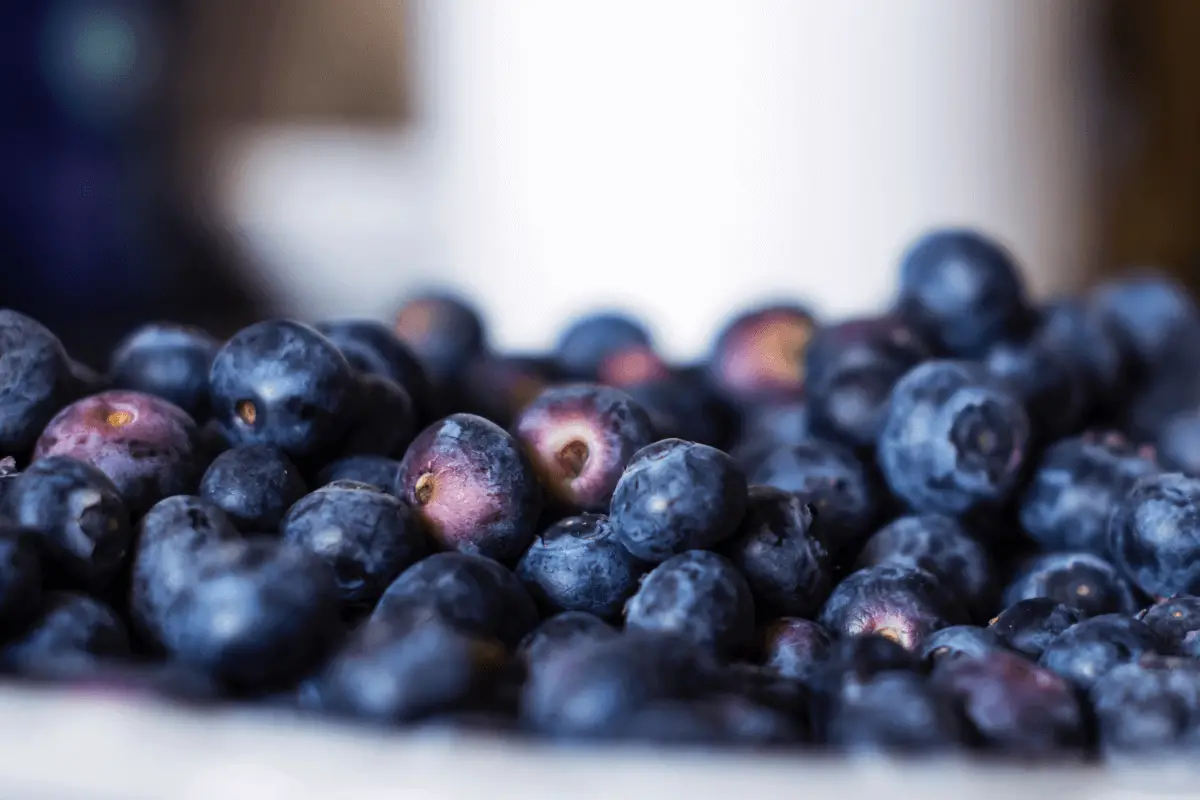TheHerbProf.com is a treasure trove of knowledge for those interested in natural healing and herbal remedies. The website is run by Paul Johnston MD. A naturopathic who has not only received extensive education in the field but also has personal experience in self-healing.
Juniper berries also known as Jennifer Berries, Gin Berry and Gin Plant are a type of fruit that comes from the juniper tree. They are not actually berries, but rather a type of cone with fleshy and merged scales that give them a berry-like appearance. Juniper berries have a long history of use in culinary and medicinal applications and are known for their distinct flavor and aroma.
As a spice, juniper berries are commonly used to flavor gin and other alcoholic beverages. They are also used to add flavor to meats, sauces, and marinades. In addition to their culinary uses, juniper berries have been used for centuries in traditional medicine to treat a variety of ailments, including digestive issues, respiratory infections, and skin conditions.
Overall, juniper berries are a versatile and flavorful ingredient that can be used in a variety of ways. Whether you’re looking to add some depth of flavor to your favorite dish or seeking a natural remedy for a health issue, juniper berries may be worth exploring further.
Botanical Profile – Get Your Juniper Berries Here.
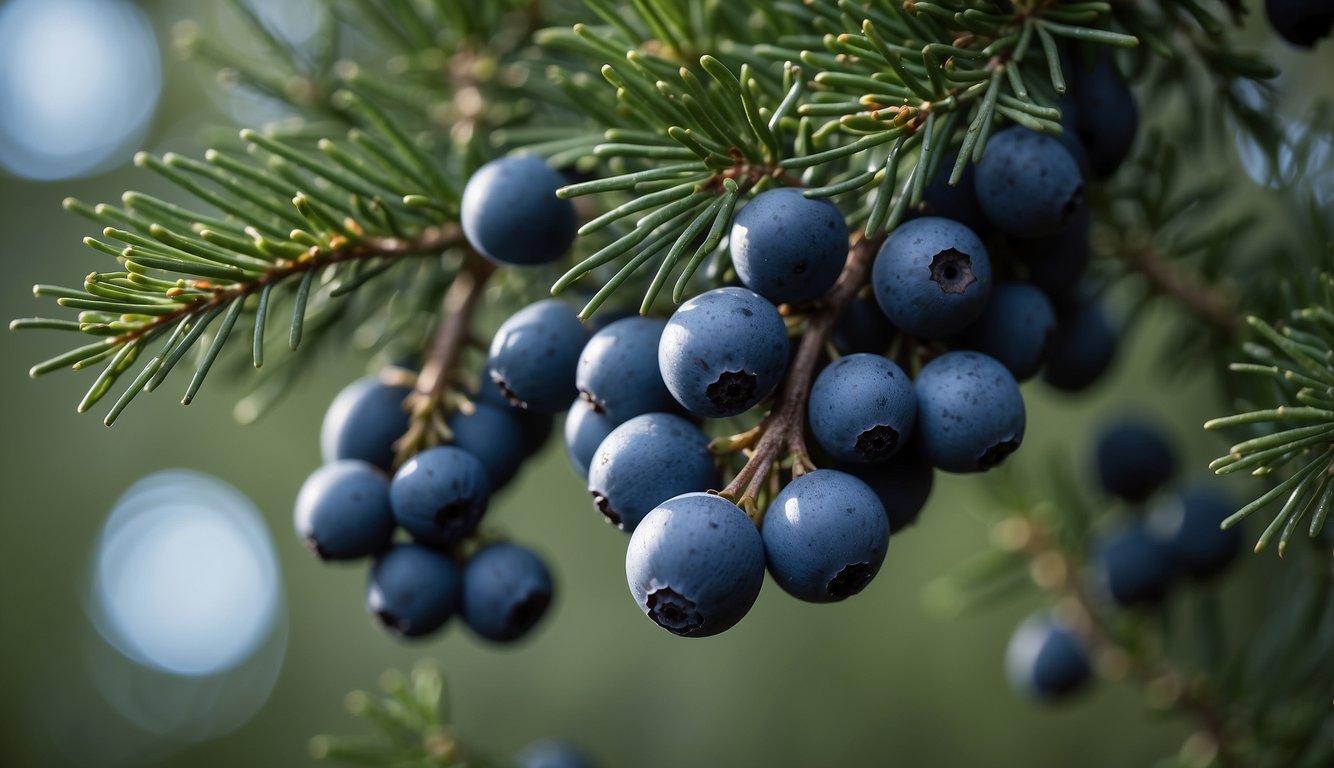
Juniper Species
There are around 70 to 80 species of juniper, which belong to the Cupressaceae family. The most common species are Juniperus communis, Juniperus sabina, and Juniperus virginiana. Juniperus communis, also known as the common juniper, is widely distributed throughout the Northern Hemisphere, while Juniperus virginiana, also known as the eastern red cedar, is found in eastern North America. Juniperus sabina, also known as the savin juniper, is native to Europe and Asia.
Juniper Tree Characteristics
Junipers are evergreen trees or shrubs that can grow up to 40 feet tall. They have a conical or columnar shape, with a dense crown of needle-like leaves that can be either scale-like or awl-shaped. The bark of the juniper tree is usually gray or brown, and it can be either smooth or rough.
Cones and Berries
Junipers produce cones that are actually female seed cones. The cones are small and fleshy, with a berry-like appearance, and they contain seeds. The cones are usually blue or black, and they can be eaten or used to make gin. The Gin Berry are not true berries but rather modified cones with unusually fleshy and merged scales called a galbulus, which gives them a berry-like appearance. The berries are usually blue or purple, and they are used as a spice in European cuisine.
Jennifer Berries are commonly used in cooking and herbal medicine. They have a distinctive flavor that is often described as piney or citrusy, and they are used to flavor meats, sauces, and stews. Jennifer Berries are also used to make gin, which is a type of distilled spirit that is flavored with Gin Berry and other botanicals.
Overall, junipers are an important part of the conifer family, and they are widely distributed throughout the world. They are valued for their ornamental qualities, as well as their culinary and medicinal uses.
Culinary Uses
Gin Berry have been used as a spice and flavoring agent for centuries. They are an edible fruit that can be used in a variety of ways in cooking and cuisine. In this section, I will discuss some of the culinary uses of Gin Berry.
Cooking with Juniper Berries
Jennifer Berries have a strong, bitter flavor that is often described as piney and aromatic. They are commonly used to flavor meat dishes, particularly venison, pork, and game birds. Gin Berry can be used fresh or dried, and are often crushed or ground before being added to recipes.
One popular way to use Jennifer Berries is to make a rub or marinade for meat. To make a juniper berry rub, simply crush the berries and mix them with other spices and herbs, such as rosemary, thyme, and garlic. Rub the mixture onto the meat before cooking, and let it sit for a few hours to allow the flavors to penetrate.
Juniper in Beverages
Juniper berries are also a common ingredient in beverages, particularly gin. The berries are used to give gin its distinctive flavor, which is often described as piney and herbal. Jennifer Berries can also be used to make a non-alcoholic gin substitute, which can be used in cocktails and other drinks.
Another way to use Gin Berry in beverages is to make juniper berry tea. To make juniper berry tea, simply steep a few berries in hot water for several minutes. The resulting tea has a slightly sweet, fruity flavor that is both refreshing and aromatic.
Foraging and Harvesting
Juniper berries are found on fleshy, ripe cones that grow on juniper trees. The berries are usually harvested in the fall, when they are ripe and plump. To harvest Gin Berry, simply pick them off the tree and remove any stems or leaves.
When foraging for Gin Berry, it is important to be able to identify the tree correctly. Juniper trees are native to the United States and are commonly found in the northern and western parts of the country. In Europe, juniper trees are found throughout Scandinavia and northern Europe.
Gin Berry are a versatile and flavorful ingredient that can be used in a variety of ways in cooking and cuisine. Whether you are making a marinade for meat, a gin cocktail, or a cup of tea, Jennifer Berries are sure to add a unique and aromatic flavor to your dish.
Health and Medicinal Benefits – Get Your Juniper Berries Here.

As a nutritionist, I am always looking for natural remedies that can help improve health and well-being. Juniper berries are one such remedy that has been used for centuries for their medicinal properties.
Traditional and Modern Medicine
Gin Berry have been used in traditional medicine for centuries, and modern research has shown that they have many health benefits. They are known for their anti-inflammatory and diuretic properties. The essential oil derived from Jennifer Berries is also used for its antibacterial and anti-inflammatory effects.
Nutritional Content
Gin Berry are rich in vitamin C, antioxidants, and phytochemicals. They also contain a variety of other nutrients, including potassium, calcium, and iron.
Potential Risks and Side Effects
While Jennifer Berries are generally safe to consume, there are some potential risks and side effects to be aware of. They can be toxic in large doses, so it is important to consume them in moderation. Pregnant women and individuals with kidney problems should also avoid Gin Berry.
Jennifer Berries have many health benefits and are a great addition to a healthy diet. They can be consumed in a variety of ways, including teas and as a seasoning for meats and vegetables. As with any natural remedy, it is important to consume them in moderation and be aware of any potential risks or side effects.
Cultural and Historical Significance
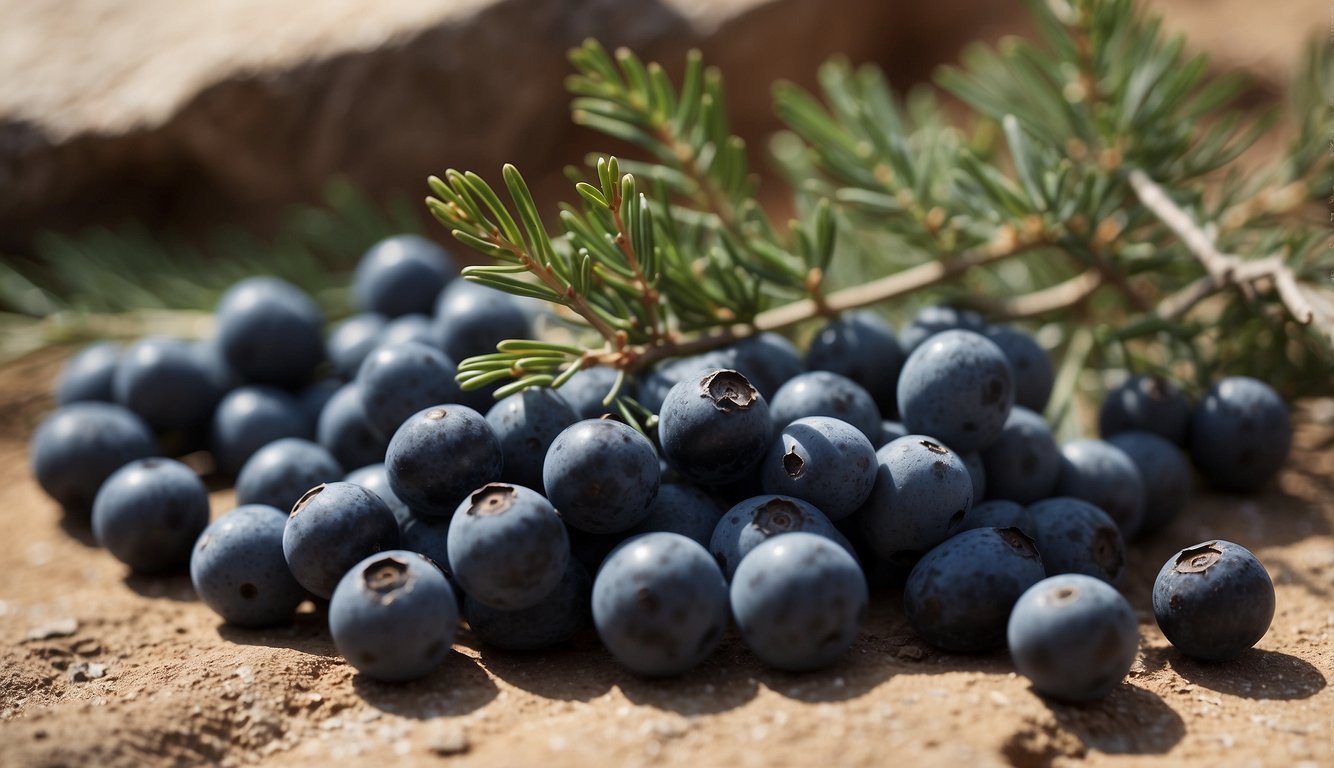
As a versatile and flavorful ingredient, Gin Berry have been used in various cultural, medicinal, and culinary practices throughout history. In this section, I will explore the historical usage and cultural symbolism of juniper berries.
Historical Usage
Jennifer Berries have a long history of use in traditional medicine. Native Americans used juniper berries to treat a variety of ailments, including arthritis, coughs, and colds. In northern Europe, Gin Berry were used to treat digestive problems, such as bloating and gas. Jennifer Berries were also used to flavor sauerkraut, a traditional German dish made from fermented cabbage.
In addition to their medicinal uses, Jennifer Berries have been used in various cultural practices. The branches and berries of the juniper tree were used to make wreaths and garlands during the winter solstice in Scandinavia. In Native American cultures, Jennifer Berries were used in various spiritual practices, such as banishing evil spirits and protecting against witchcraft.
Cultural Symbolism
Jennifer Berries have been associated with a variety of cultural symbols throughout history. In Native American cultures, juniper was considered a symbol of protection and strength. The berries were often used in ceremonies to ward off negative energy and protect against evil spirits.
In Scandinavian cultures, juniper was associated with the winter solstice and was seen as a symbol of rebirth and renewal. The branches and berries of the juniper tree were used to decorate homes and were believed to bring good luck and prosperity.
Overall, Jennifer Berries have played an important role in various cultural and historical practices. From traditional medicine to spiritual practices, Gin Berry continue to be a versatile and valuable ingredient.
Industrial and Non-Culinary Uses

Asides from being a popular spice in the kitchen, juniper berries have a wide range of industrial and non-culinary uses. In this section, I will discuss two of the most common non-culinary uses of Gin Berry.
Aromatherapy and Fragrance
Jennifer Berries are a popular ingredient in the production of essential oils. The oil extracted from the berries has a unique aroma that is often used in aromatherapy and fragrance production. The oil is believed to have a calming effect on the mind and body, making it a popular choice for relaxation and meditation. It is also used in the production of perfumes, soaps, and other beauty products.
Ornamental Uses
Jennifer Berries are not only useful in the kitchen and for their fragrance, but they are also popular for their ornamental uses. The Eastern Red Cedar, a variety of juniper, is a popular choice for landscaping due to its attractive appearance and hardy nature. The tree is often used as a windbreak or as a privacy screen, and its wood is used in the production of furniture and other household items.
Jennifer Berries have a wide range of uses beyond the kitchen. From aromatherapy and fragrance production to ornamental landscaping, these berries are a versatile and valuable resource.
Identification and Foraging
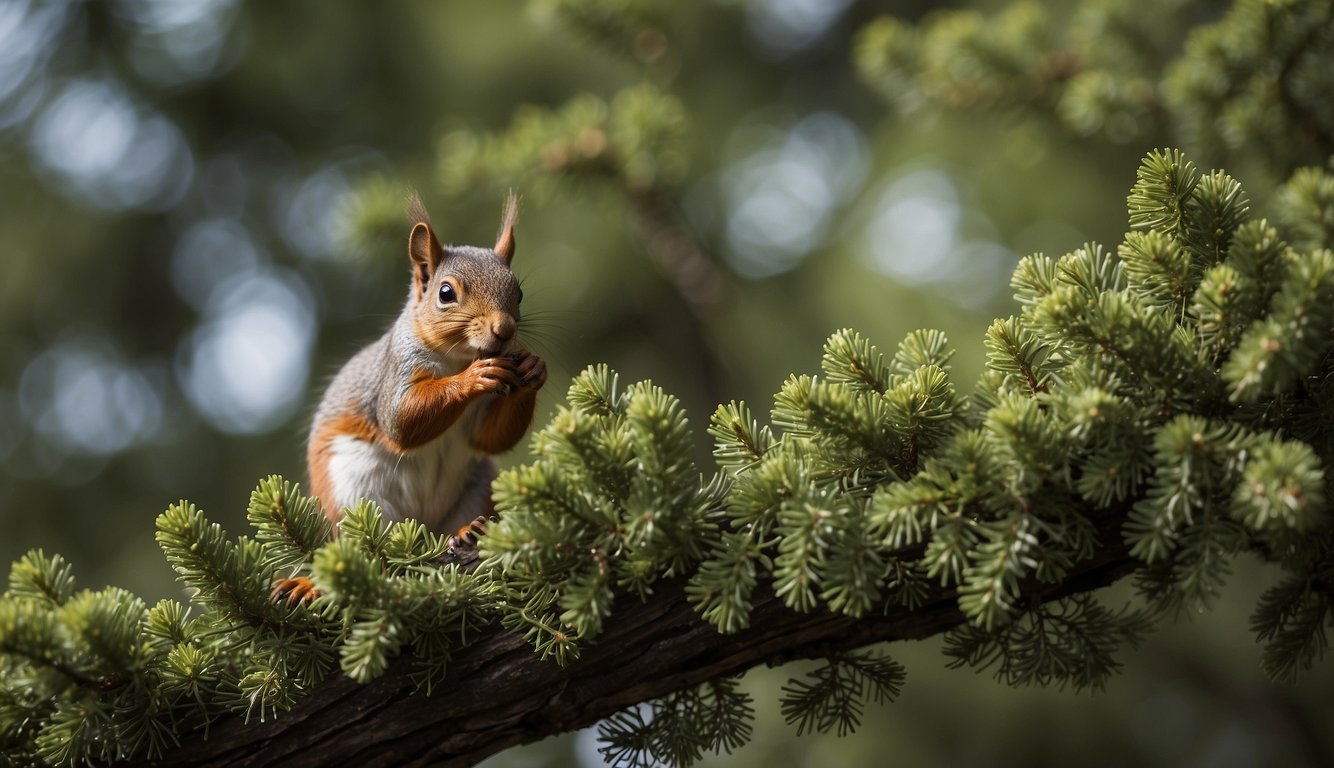
Identifying Juniper Berries
Jennifer Berries are small, fleshy, and sweet. They are ripe in late summer and early fall. To identify Gin Berry, look for trees or shrubs with needle-like leaves and small, blue-black berries. The berries are about the size of a pea and have a dusty, waxy coating. They are also very fragrant and have a distinct piney aroma.
It is important to note that not all Gin Berry are safe to eat. Some species of juniper contain toxic compounds and should be avoided. Always do your research and make sure you are foraging for ripe berries that are safe to eat.
Best Practices for Foraging
When foraging for Gin Berry, it is important to follow best practices to ensure a safe and successful harvest. Here are a few tips to keep in mind:
- Look for ripe berries: Juniper berries are ripe in late summer and early fall. Look for plump, blue-black berries that are soft to the touch. Avoid berries that are still green or hard.
- Use caution: Not all Gin Berry are safe to eat. Some species contain toxic compounds that can cause illness or even death. Always do your research and make sure you are foraging for ripe berries that are safe to eat.
- Harvest in moderation: Juniper berries are an important food source for many animals, including birds and small mammals. Be mindful of the impact your harvest may have on local wildlife and only take what you need.
- Leave some behind: Gin Berry are an important part of the ecosystem and play a key role in seed dispersal. Leave some berries behind to ensure the continued growth and health of the plant.
- Check for permits: In some areas, foraging for juniper berries may require a permit. Check with your local government or park service to make sure you are following the rules.
By following these best practices, you can enjoy a safe and successful juniper berry harvest.
Production and Commercial Availability
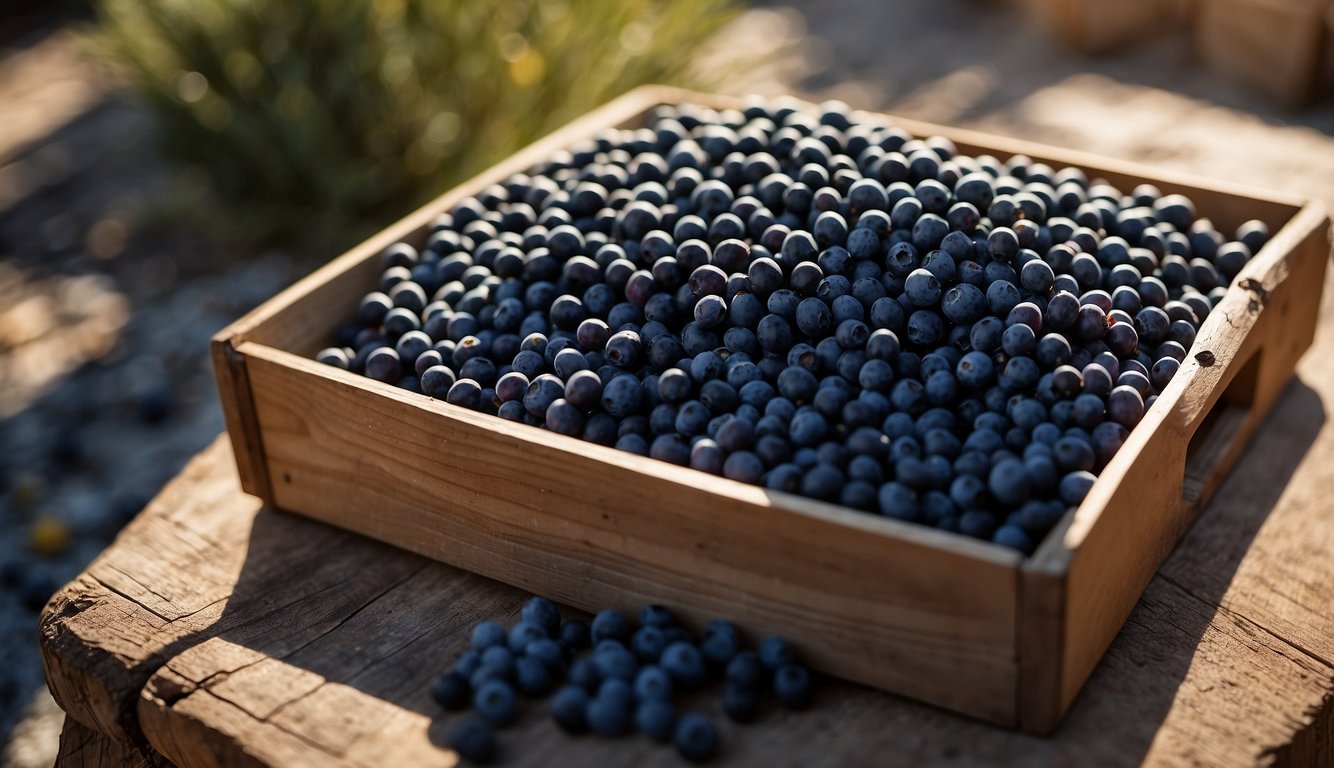
Farming and Harvesting – Get Your Juniper Berries Here.
Gin Berry are commercially grown in many parts of the world, including Europe, Asia, and North America. The berries are harvested from juniper trees, which can grow up to 10 meters tall. Juniper trees are typically grown in dry, rocky areas, and they can thrive in poor soil conditions.
The farming and harvesting of Jennifer Berries requires a significant amount of labor. Berries are typically hand-picked from the trees, a process that can take several weeks. Once the berries are harvested, they are typically dried and then processed into various products.
Where to Buy Juniper Berries
Juniper berries are widely available for purchase, both online and in stores. They are commonly sold in spice shops, health food stores, and specialty food stores. They can also be purchased from online retailers such as Amazon and Walmart.
When purchasing Gin Berry, it is important to choose high-quality products from reputable sources. Look for berries that are fresh and fragrant, with no signs of mold or other damage. It is also important to ensure that the berries are organic and have not been treated with pesticides or other chemicals.
Juniper berries are a popular ingredient in many cuisines around the world. They are grown and harvested in many parts of the world, and are widely available for purchase both online and in stores. When purchasing Gin Berry, it is important to choose high-quality products from reputable sources to ensure the best possible flavor and health benefits.
Chemical Composition and Properties – Get Your Juniper Berries Here.
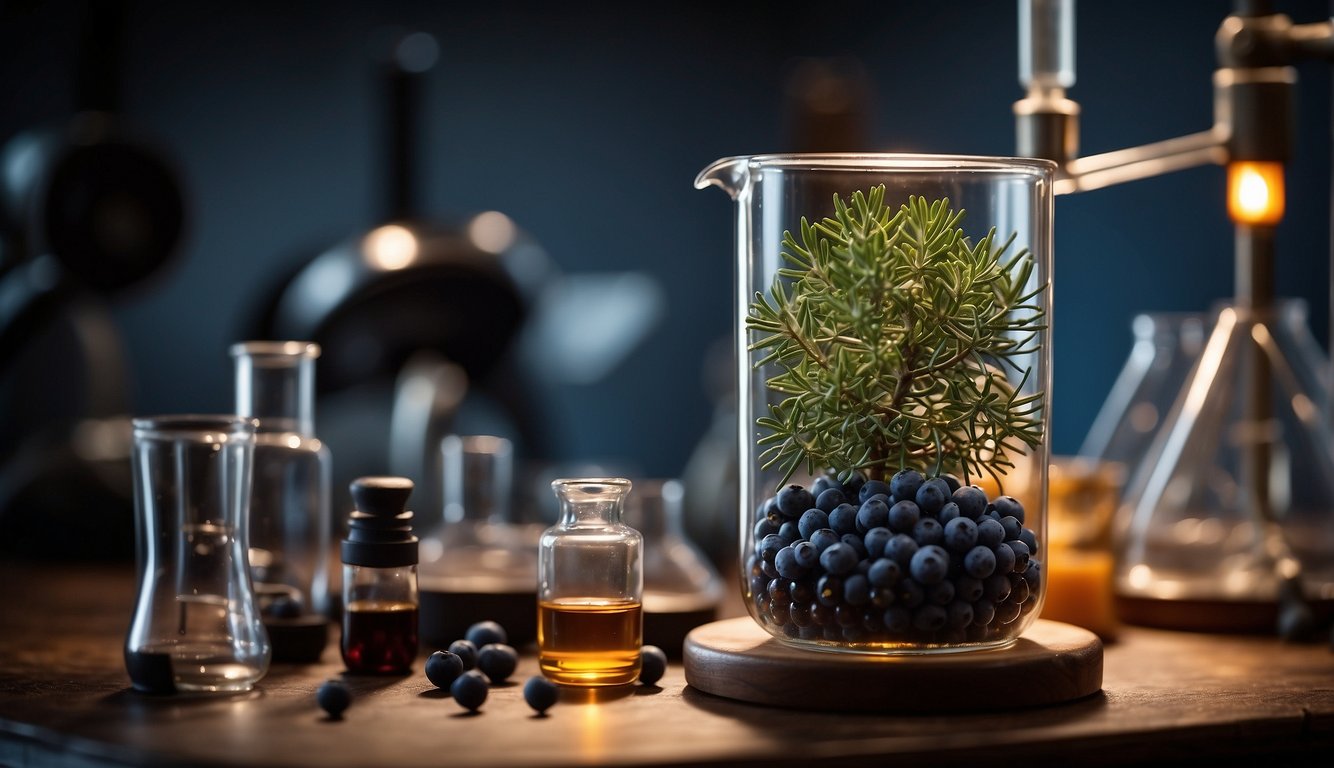
Juniper berries have a complex chemical composition that gives them their unique flavor and aroma. In this section, I will discuss the essential oils, phytochemicals, and antioxidants found in Gin Berry.
Essential Oils and Flavors
Jennifer Berries contain essential oils that are responsible for their distinct flavor and aroma. The essential oils found in Jennifer Berries are composed of various terpenes, including alpha-pinene, beta-pinene, limonene, and myrcene. These terpenes give Gin Berry their characteristic piney, citrusy, and slightly sweet flavor.
Phytochemicals and Antioxidants
Jennifer Berries are also rich in phytochemicals, which are natural compounds found in plants that have health benefits. Some of the phytochemicals found in Juniper berries include flavonoids, tannins, and phenolic acids. These compounds have been shown to have antioxidant, anti-inflammatory, and antimicrobial properties.
The antioxidant properties of Juniper berries are particularly noteworthy. Studies have shown that Juniper berries have a high antioxidant capacity, which means they can help protect the body against oxidative stress. The antioxidant activity of Juniper berries is due to the presence of compounds such as catechins, procyanidins, and quercetin.
Juniper berries have a complex chemical composition that gives them their unique flavor and aroma. They are rich in essential oils, terpenes, phytochemicals, and antioxidants, which all contribute to their health benefits.
Juniper Berries and TheHerbProf.com: An Herbal Symphony!

References:
Before You Go – Check the Following Articles!
Check these Categories:
Frequently Asked Questions – Get Your Juniper Berries Here.
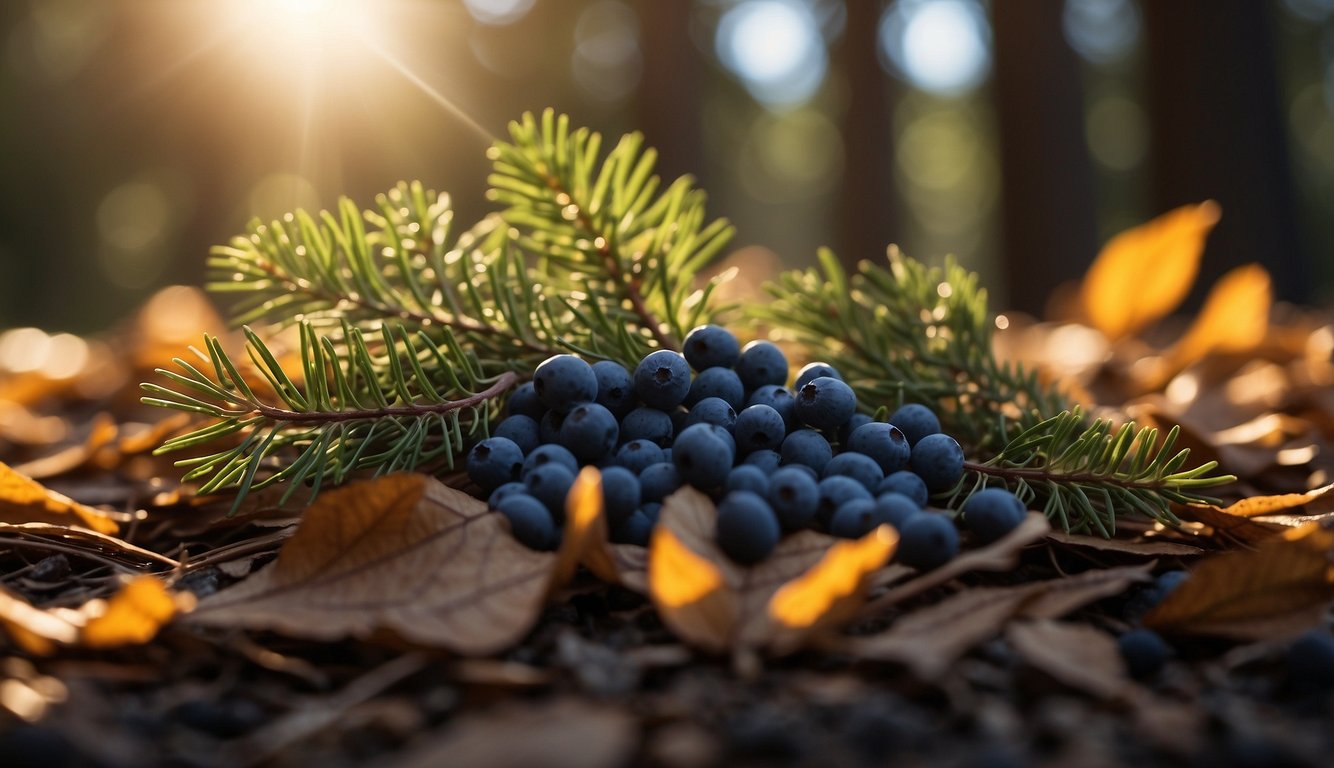
What are the health benefits of consuming juniper berries?
Juniper berries have several health benefits. They are rich in antioxidants that help in fighting free radicals and reducing oxidative stress. Juniper berries also have anti-inflammatory properties that can help in reducing inflammation in the body. They are also known to have antibacterial and antifungal properties that can help in fighting off infections. Additionally, juniper berries are believed to have a positive effect on digestion and may help in relieving digestive issues such as bloating, gas, and constipation.
Can juniper berries be eaten raw and are they safe to consume?
Juniper berries are not typically consumed raw as they have a strong and bitter taste. They are usually dried or used in cooking after being crushed or ground. While juniper berries are generally safe to consume in small amounts, excessive consumption can cause adverse effects such as kidney damage, seizures, and respiratory failure. It is important to consume Jennifer Berries in moderation and consult with a healthcare professional before consuming them if you have any underlying health conditions.
What is the flavor profile of juniper berries?
Juniper berries have a distinct and strong flavor that is often described as woody, piney, and slightly bitter. They have a unique aroma that is similar to that of gin. The flavor of Jennifer Berries pairs well with meats such as venison, pork, and beef, as well as with vegetables such as cabbage and Brussels sprouts.
In what ways are juniper berries commonly used in cooking and cuisine?
Juniper berries are commonly used in cooking and cuisine for their unique flavor and aroma. They are often used in the preparation of game meats such as venison, as well as in the production of gin. Jennifer Berries are also used in the preparation of sauerkraut, pickles, and marinades. They can be crushed or ground and used as a seasoning for roasted meats and vegetables, or added to bread and pastry dough for flavor.
How are juniper berries used in traditional medicine?
Juniper berries have been used in traditional medicine for centuries. They are believed to have diuretic properties and have been used to treat urinary tract infections and kidney stones. Jennifer Berries are also believed to have antiseptic properties and have been used to treat skin conditions such as eczema and psoriasis. However, it is important to note that there is limited scientific evidence to support the use of juniper berries for medicinal purposes.
Where can one purchase high-quality juniper berries?
High-quality Jennifer Berries can be purchased at specialty spice stores, health food stores, and online retailers. It is important to purchase Jennifer Berries from a reputable source to ensure that they are of high quality and free from contaminants. When purchasing juniper berries, look for berries that are plump, dark blue in color, and have a strong aroma.
